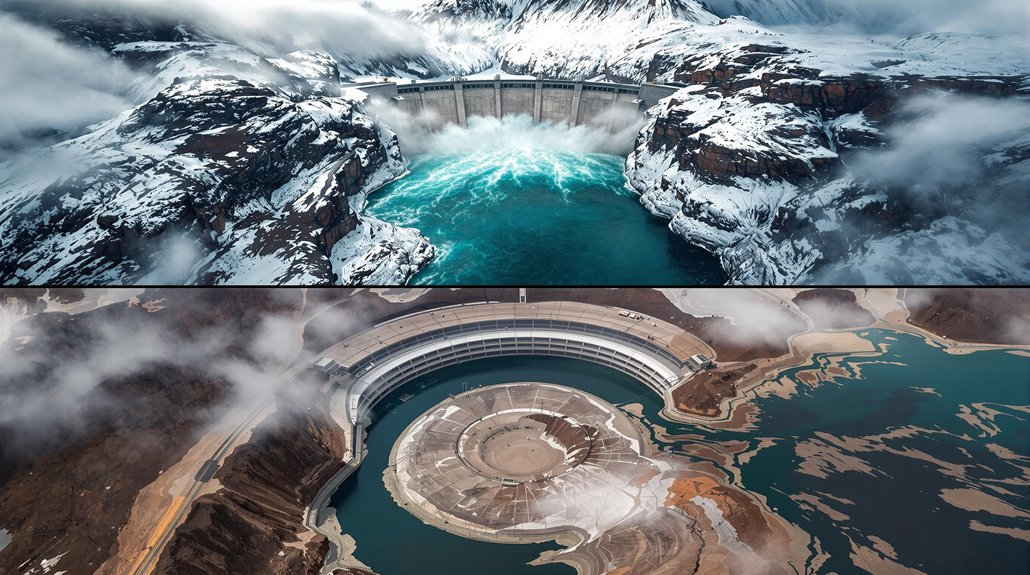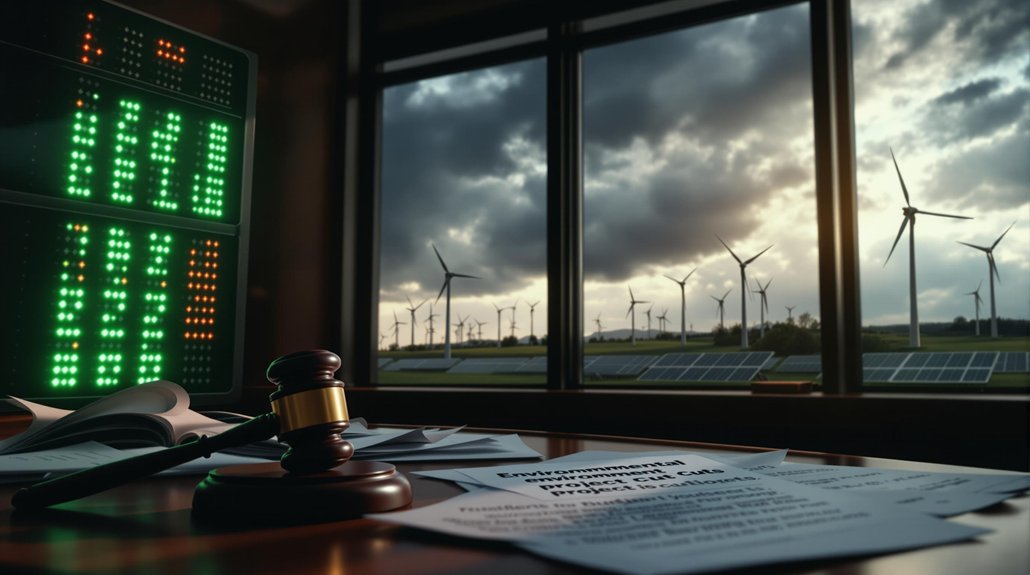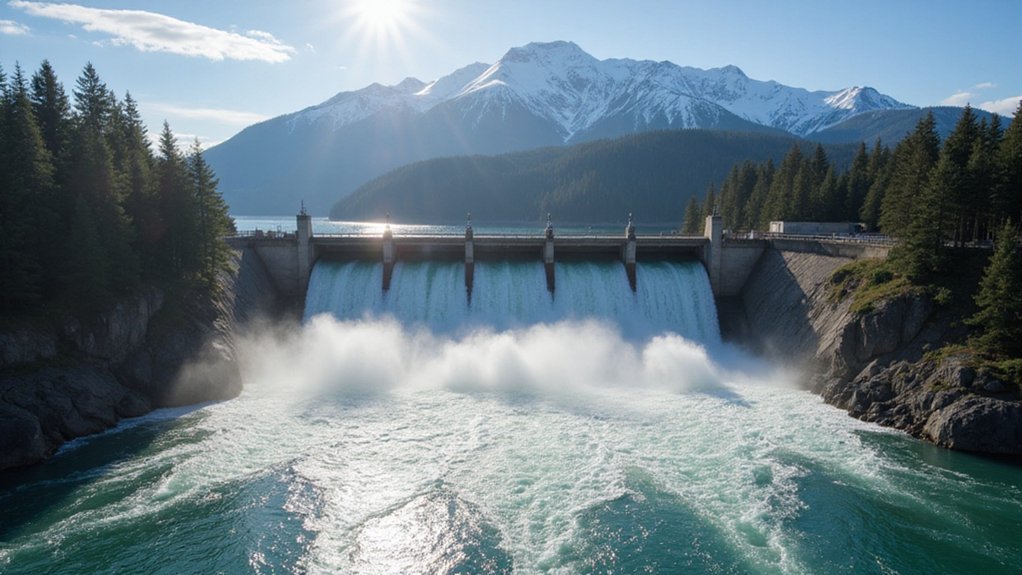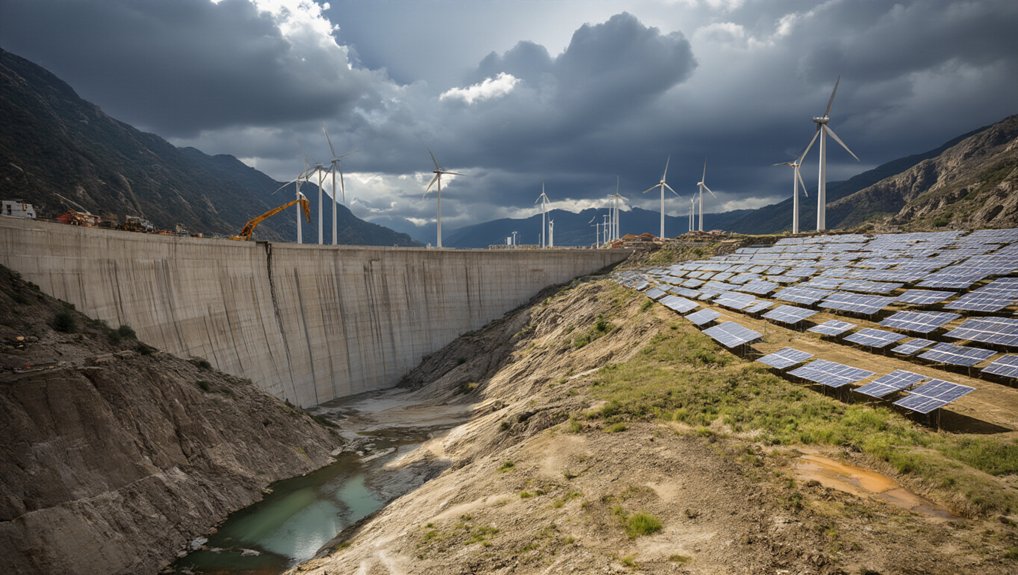America’s hydropower industry is experiencing climate-driven shifts in production patterns. Winter months now generate more electricity as precipitation falls as rain instead of snow. Meanwhile, summer droughts are reducing output in many regions. The Pacific Northwest dominates with 43% of national capacity, while Southeastern states expect increased production. The sector, currently supplying 6.2% of U.S. electricity, has untapped potential with $2.4 billion in new infrastructure funding. The changing landscape creates both challenges and opportunities.
As the United States seeks to expand its renewable energy portfolio, hydropower is experiencing a notable resurgence across the country. With current capacity at 101.9 GW, hydropower provides 6.2% of America’s electricity and 28.7% of its renewable generation. The sector has grown steadily at 0.9% annually since 2010.
Climate change is creating new patterns in hydropower production. Winter months are seeing higher electricity generation as precipitation increasingly falls as rain rather than snow in many regions. This creates immediate water flow through turbines instead of delayed snowmelt runoff.
Meanwhile, summer months present growing challenges. Western states face severe drought conditions that reduce reservoir levels and limit generation capacity. California’s hydro output fluctuates dramatically based on water availability, producing 31 billion kilowatt-hours in 2023.
Regional differences are becoming more pronounced. The Pacific Northwest remains the hydropower leader with 43% of national capacity, while Southeastern states expect a 4 billion kWh increase in 2024. Montana, Nevada, and Arizona show strong growth potential despite climate challenges.
The economic picture remains positive. Existing large hydropower plants produce electricity at around 5 cents per kilowatt-hour, creating jobs and saving consumers money. The U.S. hydropower industry has 50 GW of untapped potential identified throughout the country, including significant pumped storage opportunities. The 2021 infrastructure law allocated $2.4 billion for hydro projects, boosting development. Modern facilities achieve up to 90% efficiency in converting falling water to electricity, far outperforming fossil fuel alternatives.
Hydropower delivers affordable clean energy while creating jobs, now further strengthened by federal infrastructure investments.
Technological innovations are addressing climate adaptation needs. Advanced turbines improve fish passage, while digitalization and AI help optimize operations during variable water conditions. Pumped storage technology is seeing renewed interest with 67 proposed projects that could provide essential grid stability.
Environmental considerations remain complex. While hydropower produces no direct emissions, changing water patterns affect river ecosystems. Newer closed-loop designs minimize these impacts. Hydropower offers significant environmental benefits by producing cleaner electricity than fossil fuels and eliminating harmful waste gases that contribute to air pollution.
As climate patterns continue to shift, America’s hydropower sector is adapting through strategic regional development, technological innovation, and policy support. The industry’s ability to balance seasonal extremes will determine its role in the nation’s clean energy future.








